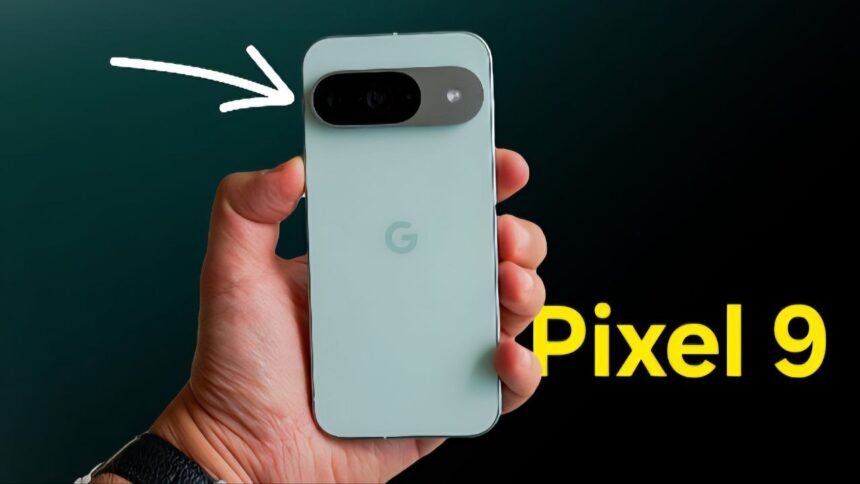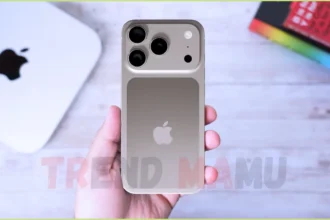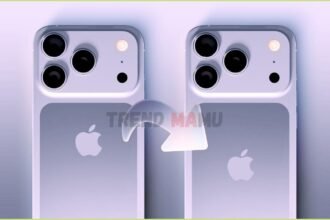Google Pixel 9 A Smartphone Camera That Challenges DSLRs. Launched on August 13, 2024, the Google Pixel 9 has redefined mobile photography, positioning itself as a formidable contender against DSLR cameras with its advanced computational photography and AI-driven features.
Priced starting at $799 USD for the 128GB model and $899 USD for 256GB, the Pixel 9 delivers exceptional camera performance at a fraction of the cost of professional DSLR setups, making high-quality photography accessible to a global audience.
While it doesn’t fully replace specialized DSLR systems, its innovative technology narrows the gap significantly, offering professional-grade results in a pocket-sized device.
Revolutionary Camera System
The Pixel 9 features a dual-camera setup with a 50MP main sensor (f/1.68, OIS) and a 48MP ultrawide lens (f/1.7, 123° field of view), complemented by a 10.5MP front camera (f/2.2).
Unlike traditional cameras that rely solely on hardware, the Pixel 9 leverages Google’s Tensor G4 chipset and advanced AI algorithms to capture and process images. Its computational photography analyzes multiple exposures simultaneously, optimizing texture, color, and lighting to produce stunning results.
DXOMARK praises its “vibrant colors, dynamic range, and detail retention,” noting its ability to rival flagship siblings like the Pixel 9 Pro in most scenarios.
- HDR Processing: The Pixel 9’s intelligent HDR+ merges multiple exposures to eliminate harsh shadows and preserve highlights, excelling in high-contrast scenes like bright outdoor settings or mixed indoor lighting.
- Night Sight: The Night Sight mode transforms low-light photography by combining dozens of images over seconds, revealing details invisible to the naked eye. This makes it ideal for candid shots in dimly lit environments, such as evening cityscapes or indoor events, without needing a flash.
- Portrait Mode: Enhanced depth-sensing and edge detection create a bokeh effect that rivals DSLR prime lenses, with accurate subject separation and natural skin tone reproduction across diverse subjects.
DSLR Comparison: Strengths and Limitations
In head-to-head tests, the Pixel 9’s image quality in optimal lighting is nearly indistinguishable from entry-level DSLRs, thanks to its AI-driven processing. Reviews from TechRadar highlight its macro mode, which produced “eye-opening” results compared to a full-frame Nikon DSLR, particularly for close-up shots.
In mixed-lighting scenarios, the Pixel 9 often outperforms DSLRs due to its computational advantages, delivering consistent exposure and color accuracy.
However, limitations exist:
- Zoom Capabilities: Lacking a dedicated telephoto lens, the Pixel 9 relies on Super Res Zoom up to 8x, which preserves detail well but can’t match the optical reach of DSLR telephoto lenses for wildlife or sports photography.
- Low-Light Consistency: While Night Sight excels, some testers noted slight noise and dynamic range inconsistencies in extreme low-light conditions compared to high-end DSLRs with larger sensors.
- Video: The Pixel 9 records 4K video at up to 60fps with excellent stabilization and tracking, but it lacks 8K recording, a feature found in some competitors like the Xiaomi 15 Ultra.
Despite these constraints, the Pixel 9’s compact size, silent operation, and AI tools like Magic Eraser, Best Take, and Photo Unblur make it a versatile choice for street photographers, photojournalists, and casual users seeking professional results without bulky equipment.
Professional Control and AI Innovation
The Pixel 9 bridges the gap between automation and professional control. Its Pro mode offers manual adjustments for exposure, focus, and white balance, with focus peaking and histogram displays for precision.
Users can shoot in RAW for post-processing flexibility or rely on Google’s AI for instant, shareable results. Features like Add Me, which inserts the photographer into group shots, and Video Boost (available on Pro models but not the base Pixel 9) enhance creative possibilities.
The Tensor G4 chip, paired with 12GB RAM, ensures smooth performance, making it ideal for multitasking and AI-driven editing.
Design and Battery Life
The Pixel 9 sports a 6.3-inch OLED display (2424×1080, 120Hz, 2700 nits peak brightness) with Gorilla Glass Victus 2, offering vibrant visuals and durability. Its IP68 rating ensures resistance to water and dust, ideal for diverse environments.
The 4700 mAh battery provides all-day usage, with 27W fast charging (no charger included) and 15W wireless charging. Reviews note it lasts through heavy use, though heavy photographers may need a power bank for extended shoots.
Market Impact and Value
At $799 USD, the Pixel 9 competes with premium flagships like the iPhone 16 ($799) and Samsung Galaxy S25 ($799), but its camera performance rivals devices costing $1,200 or more, such as the iPhone 16 Pro Max.
Its seven-year software support (until 2031) and clean Android 15 experience add long-term value. Compared to DSLRs, which often cost $1,500-$3,000 with lenses, the Pixel 9 democratizes professional-grade photography, appealing to wedding photographers, photojournalists, and enthusiasts who value portability and affordability.
The Google Pixel 9, launched in August 2024, challenges DSLRs with its 50MP AI-powered camera, Night Sight, and HDR+ processing, delivering near-professional results in a compact package.
While it can’t fully replace DSLRs for specialized tasks like extreme telephoto or studio work, its versatility, affordability, and computational prowess make it a game-changer for everyday and semi-professional photography.
For global users seeking a high-quality camera phone that punches above its price, the Pixel 9 is a revolutionary choice.









